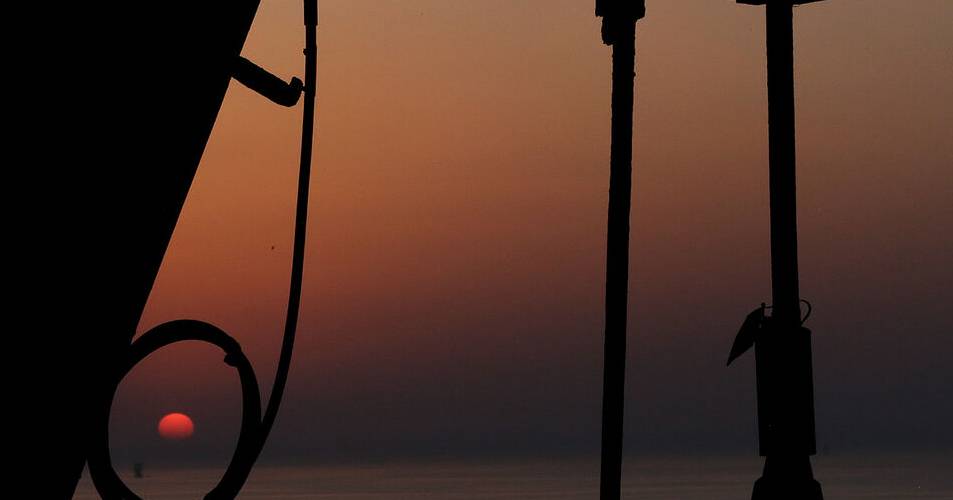Iran Faces Soaring Inflation and Stagnant Growth: IMF’s Grim Economic Outlook Unveiled
Iran is grappling with one of its most challenging economic outlooks in years, as indicated by the latest data from the International Monetary Fund (IMF). With soaring inflation, a growing fiscal deficit, and a shrinking nominal economy, these trends signal a potential long-term instability for the nation. The IMF’s Regional Economic Outlook for the Middle East and Central Asia, published recently, has projected that Iran’s real GDP will only grow by a minimal 0.3% in 2025, a stark decline from the previously estimated 3% growth for 2024.
This downward revision largely reflects the tightening of US sanctions imposed under President Donald Trump, which aimed to drastically cut Tehran’s oil revenues and limit its access to international financial markets. In April alone, the Trump administration introduced eight new packages of sanctions targeting the tankers and trading networks that facilitate the sale of Iranian oil. As a result, imports from China, which is Iran’s primary oil buyer, dropped to 1.38 million barrels per day (bpd) between January and April 2025, marking a decline of approximately 7% from the 2024 average.
The IMF forecasts a decline in both production and exports of Iranian oil, estimating a reduction of 300,000 bpd in 2025. However, independent energy analytics firms such as Kpler, Vortexa, and TankerTrackers predict an even steeper drop, potentially reaching 500,000 bpd.
Economic Indicators: A Dismal Outlook
The economic landscape for Iran continues to deteriorate, with critical indicators pointing to a grim future:
- Declining Exports: The IMF projects that Iran’s total exports, including non-oil goods and services, will decrease by 16% in 2025, falling to $100 billion.
- Falling Imports: Imports are expected to drop by 10%, leading to a narrow trade surplus of only $2 billion, compared to $10 billion last year.
- Capital Flight: Despite recent trade surpluses, capital flight remains alarmingly high, with an estimated $14 billion exiting the country in the last nine months of 2024, following $20 billion the previous year.
Since the initiation of Trump’s maximum pressure campaign against Tehran in 2018, these economic challenges have only intensified.
Currency Depreciation and Economic Contraction
Perhaps one of the most alarming statistics from the IMF is the projection of Iran’s nominal GDP. It is expected to plummet from $401 billion in 2024 to $341 billion in 2025. This dramatic decline is primarily attributed to the near halving of the value of Iran’s currency, the Rial, throughout 2024.
While the real GDP appears stable when adjusted for inflation and currency devaluation, the dollar-denominated figures illustrate a severe economic contraction. Once, in 2000, Iran’s economy was larger than those of the United Arab Emirates, Turkey, and Saudi Arabia. Currently, all three nations have surpassed Iran, with GDPs exceeding Iran’s by a factor of more than three.
Soaring Prices and Economic Pressure
As prices continue to rise across Iran, the IMF has revised its inflation estimates for 2025, increasing them from 37% to just above 43%. This statistic places Iran as the fourth highest globally in terms of inflation, surpassed only by Venezuela, Sudan, and Zimbabwe.
Several factors are contributing to this inflation surge:
- The collapse of the Rial
- Restricted access to foreign reserves
- Excessive domestic borrowing
- Rising import costs due to sanctions
Future Projections: A Critical Need for Oil Revenue
Perhaps the most concerning aspect for Iran’s government is the IMF’s estimate that the nation requires oil prices to reach $163 per barrel just to balance its 2025 budget. This figure is more than double the current global average. The Iranian administration, led by President Masoud Pezeshkian, has projected daily oil exports of 1.85 million bpd at a price of $67 per barrel. However, the IMF anticipates actual exports will average only 1.1 million bpd, highlighting a significant shortfall.
This pattern of economic mismanagement is not new; successive administrations in Iran have consistently run deficits equivalent to about one-third of total public spending. To cover these gaps, they have turned to heavy borrowing and money printing, both of which have exacerbated inflation and monetary instability.
The IMF forecasts Iran’s gross government debt to approach 40% of GDP in 2025, with projections indicating a slight increase in 2026. These figures are particularly troubling for an economy already under immense external pressure, signaling a need for urgent reforms to stabilize the nation’s financial health.






